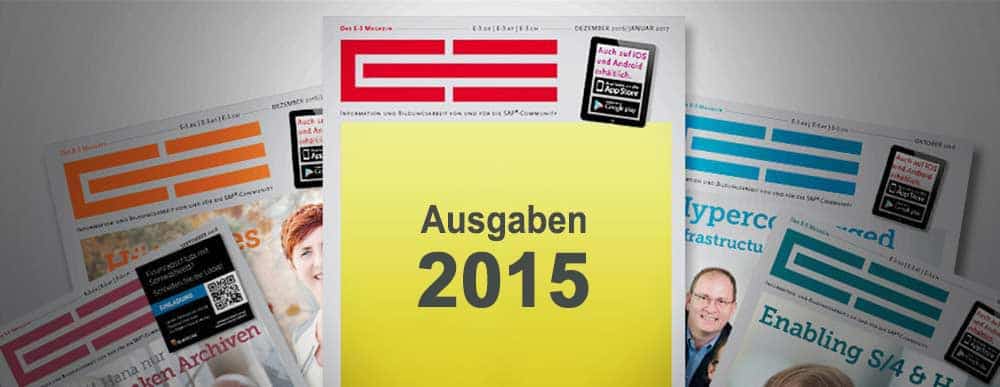Agility and transparency instead of complexity and risks


To promote the digitization of the economy, the German government has launched the "Industry 4.0" project. The aim is to optimize processes and detach production steps from human intervention, thus making them more flexible.
At the same time, companies find themselves in the middle of the VUCA world (Volatility, Uncertainty, Complexity, Ambiguity).
This means that the demand side is increasingly characterized by volatility and uncertainty, and global value chains by complexity and ambiguity. In addition, customers are increasingly asking for individual and innovative products.
All these factors together are exerting increasing competitive pressure on companies. In order to survive the competition, they must make their processes more efficient and effective and at the same time become more agile. IT solutions play a key role in this.
Purchasing as a hub
Purchasing in particular faces the challenge of networking with other companies as a hub. Its tasks are expanding to include the coordination and control of the supply chain in order to drive innovation for customers.
As a result, its focus shifts even more strongly to strategic tasks. To ensure that the necessary capacities are available, the operational procurement processes must run as automatically as possible and no longer require any intervention by the purchasers.
At the same time, the complexity resulting from the increasing networking with global suppliers must become manageable. This places high demands on procurement solutions.
For strategic purchasing, these systems must provide the ability to digitally connect with suppliers - whether they are existing or potential suppliers.
Thus, buyers must be enabled to quickly identify new suppliers and establish a completely IT-based business relationship with them.
In addition, the purchasing system should be able to provide transparency about a company's supplier base so that their performance can be monitored on an ongoing basis.
Electronic supplier management is required to comprehensively evaluate suppliers, develop them in a targeted manner, and promote innovation.
In the area of operational purchasing, on the other hand, it must be possible to achieve the highest possible "no-touch" rate with the IT solutions. Users should be provided with an easy-to-use program so that they can handle the ordering processes completely themselves.
In the area of purchasing direct or MRO materials, a comprehensively digitized purchase-to-pay process can already be used today. Stocks are controlled by systems in real time and requirements are automatically converted into external orders.
In addition, 3D printers are increasingly replacing external procurement processes, as they enable the internal production of required small or spare parts. Indirect purchasing, on the other hand, still has great potential for optimization, especially in the area of services, where a growing number of service providers and temporary workers need to be managed.
Cloud as an opportunity
For several years now, there has been a growing trend away from customer-owned on-premise systems toward cloud solutions. One of the frontrunners in purchasing is Ariba.
With a transaction volume of more than €750 billion annually, SAP's global merchant network handles more business than eBay, Amazon, and Alibaba combined.
Internationally, there are already 1.7 million companies connected to Ariba, and in Europe in particular, SAP is counting on a rapidly growing supplier base in the coming years.
The cloud-based Ariba solutions can relieve buyers in many ways. For example, when searching for and on-boarding new suppliers, it is possible to publish an RFP for all suppliers registered in the Ariba network with just a few clicks.
Master data is no longer maintained laboriously by companies in their own systems, but by suppliers centrally in Ariba, from where the data can be distributed automatically.
Cloud networks enable buyers to quickly find new suppliers and obtain comparative quotes on existing agreements. Sellers, in turn, are enabled to sift through tenders and take advantage of new business opportunities. Both sides can react quickly to changing demand and supply situations.
Another advantage is the high speed of innovation of cloud solutions, which are constantly being developed to meet the requirements of digitization in the VUCA world.
One example is the integration of Ariba with Fieldglass, a cloud solution designed specifically for the needs of staffing and services procurement.
Reduce complexity
Many companies have adapted their on-premise ERP and purchasing systems, such as SAP SRM, to their individual requirements in complex implementation projects.
An on-premise solution is initially a closed system that can be connected to external suppliers through interfaces. Some interfaces have to be programmed partner-specifically for data exchange.
However, connectivity, i.e. the simple exchange of information along the supply chain, is one of the success factors for Industry 4.0 concepts. This is where cloud solutions like Ariba can play to their strengths and reduce complexity.
Instead of many different interfaces to partners, only one interface - the one to the cloud - is required. Ariba offers standard interfaces for almost all systems and converts the data into the required format.
Country-specific data validations are performed automatically. In addition, a high "no-touch" rate is achieved through the automatic end-to-end processing of all purchasing documents.
In addition, transparency increases because the status of a document can be updated in seconds and is traceable at any time. Companies receive a timely overview of orders, invoices and supplier performance.
Recommended Hybrid Clouds
To leverage existing investments in on-premise solutions while taking advantage of cloud software, hybrid solutions come into consideration.
For example, it is advisable to order indirect or B and C materials in a user-friendly way via a web interface, whereas important direct materials should initially continue to be ordered via the ERP.
Orders can be played from the ERP system into the Ariba network, where connected suppliers can be used to expand the supplier base. By diversifying in this way, companies can reduce supply risk, achieve more favorable prices and improve delivery quality.
The connection to the cloud can be realized within a few weeks. It should be supported and accompanied by an IT consulting company that combines SAP, cloud and purchasing process knowledge.
Numerous real-world examples prove this: By using cloud-based Ariba solutions, purchasing organizations can achieve many benefits, such as an increased "no-touch" rate and improved transparency over purchasing processes and expenditures.
The simplified handling of operational activities gives buyers more time to meet the challenges of Industrie 4.0 and to focus on strategic, value-creating activities.





